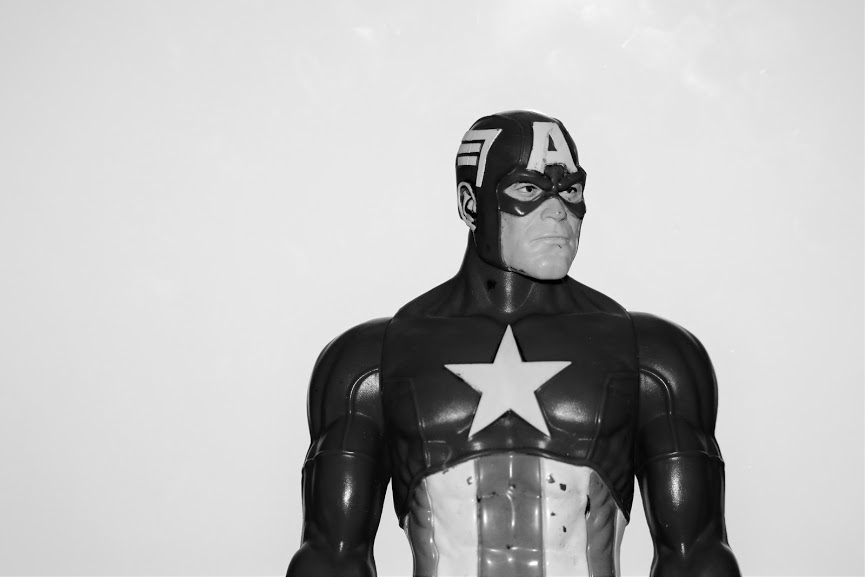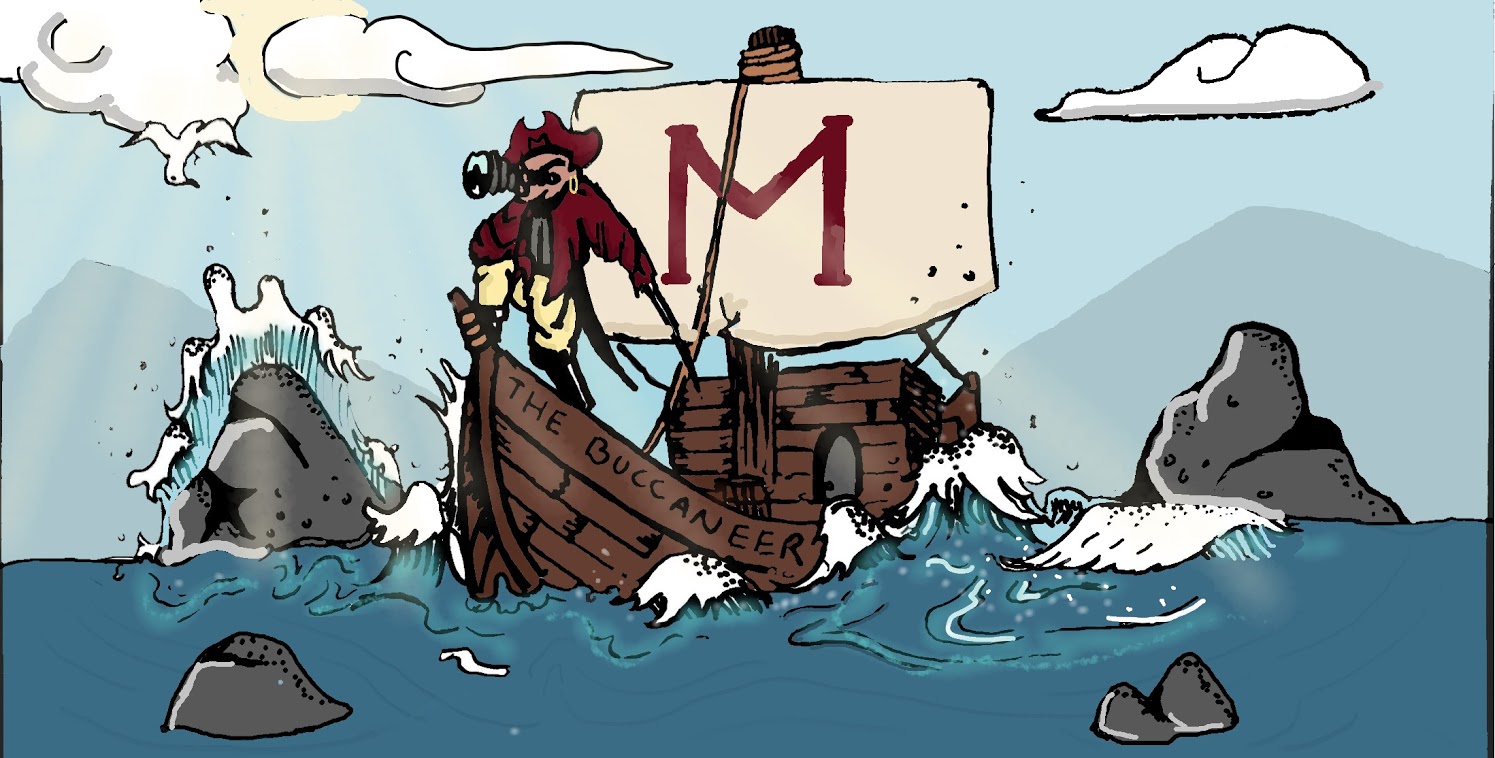Avengers: Endgame Review
Warning: Spoilers Ahead
June 28, 2019
Ten years and twenty one films ago, the Marvel Cinematic Universe was introduced and has continued to expand. The recent resurgence in comic book/ superhero culture is due to Marvel’s ambitious goals and their achievements in cinema. The movies have lead to television shows, animated series and various merchandise that caused Marvel Comics to become the most profitable comic book company today. All of this has led up to the final film in the Infinity saga, Avengers: Endgame. Now the second highest grossing movie of all time, Avengers: Endgame is not only a financial success but also a cinematic one. There will be spoilers in this review, so if you haven’t seen the movie, I suggest you stop reading.
Avengers: Endgame acts as a “part two” to Avengers: Infinity War in which the titan Thanos (Josh Brolin) collects all six infinity stones and snaps his fingers, killing half of all life in the universe. Endgame follows the remaining heroes, five years after what is now called The Decimation, as they try to move on from their loses and rebuild the world. When they’re given hope in the form of time travel, they are tasked with going back in time to retrieve the infinity stones and bring them to the future so that they can reverse the effects of the snap. One of the great things about this movie is that it bothers to explain how time travel works. There is a small but notable scene in which the characters talk about the fundamentals of time travel and its basic rules. Not only does this clear up a lot of confusion for the viewer as to what’s going on, but it also eliminates the possibility of plot holes due to the specific way they describe time travel. The special effects are clean and precise; nothing looks too cartoonish and wide shots of the cast during battle sequences don’t just look like a video game where the characters move unnaturally with a lot of distractive flashing lights. Paired with good effects, battle sequences are extremely engaging because of the intensive fight choreography. Each character’s different abilities are highlighted through the way they fight which makes for dynamic sequences. Plus, attacks against the heroes and injuries sustained by the heroes make the scenes more realistic and the stakes higher.
Avengers: Endgame is not the kind of movie you only see once. This is partly because you’ll be in tears the entire last thirty minutes of the movie and won’t be able to process everything and partly because there are plot points that are either too rushed or don’t make sense that end up distracting the viewer from the main focus of a scene or the movie as a whole. The two biggest issues with the movies are the directions they chose to take two key characters. The most controversial character choice concerns Thor (Chris Hemsworth). I’m not talking about their decision to make Thor’s character a weakened version of who he used to be because it makes sense that he would feel discouraged and responsible, in part, for the snap and its results. I’m talking about their decision to make Thor’s character function solely as comedic relief until his powers suited the needs of the plot. Rather than pull an Iron Man 3 (where Tony Stark experiences anxiety after the events in The Avengers) and show Thor as a struggling and relatable hero, he was played off as a beer drinking, pizza eating, two dimensional, fortnite player whose only purpose was to get cheap laughs. At first the scenes of him, Korg, and Meek are funny, but after a while the whole thing becomes gimmicky. Sure, the moment with Frigga was a turning point and actually gave him substance, but it seemed as though that conversation only happened to give Thor a quick fix for his emotional issues. The plot needed Thor to use his lightning against Thanos and retrieve Mjolnir for Steve’s later use, so they decided he didn’t need to be a gimmicky character anymore and solved all of his troubles in five minutes. This leads to another character whose arc wasn’t done justice, Bruce Banner/ The Hulk (Mark Ruffalo). Watch any Marvel movie where Bruce Banner makes an appearance and it becomes blatantly obvious that his main conflict is that he can’t/ doesn’t want to find a balance between himself and his mutated alter ego The Hulk. However, Avengers: Endgame decides that the ten year struggle central to Banner’s character will be resolved quickly and off screen. Needless to say, this makes absolutely no sense. Understanding that Endgame is a three hour movie and that not every detail can be covered in the run time, a twenty minute exposition of how Bruce Banner accepted and merged with The Hulk, to become Professor Hulk, is unneeded. This does not mean, however, that a one minute offhanded explanation of the scientific studies and resolution to his struggle with The Hulk, who he was outspoken in hating in all of the previous movies, is enough. The treatment of his arc so carelessly diminishes the trauma he experienced and the emotional weight of his decisions in The Avengers and Age of Ultron.

It might be hard to ignore some of the flaws considering they are persistent throughout the movie and can even be seen as a distraction, but overall Avengers: Endgame is a great movie. Among the things done right is the closing of Natasha and Tony’s stories. Easily, one of the most influential characters in the MCU is Tony Stark/ Iron Man (Robert Downey Jr.). Acting as both the beginning and end of the Infinity saga, Tony Stark wields the infinity gauntlet and is able to eradicate Thanos and his entire army. He saves the entire universe, but sacrifices his life. The impact of the scene becomes that much greater when Tony says his famous line, “I am Iron Man”; it enforces his contribution to not only the avengers, but to the Marvel franchise as a whole. Another character lost, this time before the battle even began, was Natasha Romanoff/ Black Widow (Scarlett Johansson). Natasha and Clint Barton/ Hawkeye (Jeremy Renner) are given the task of retrieving one of the infinity stones, the soul stone, from a planet called Vormir. Unbeknownst to them, the soul stone requires a sacrifice. Natasha and Clint end up fighting one another, each believing they should die to save the other. The scene lasts for no more than five minutes but the audience is on the edge of their seats knowing that either could die in the next second. Eventually, Natasha is the one to complete the sacrifice and it is a fitting ending for the ex-assassin. Never having a real family, Natasha views The Avengers as her adopted family, and she is willing to do anything to protect them and ensure their plan will succeed to bring everyone back. It does her character justice and solidifies her importance to the team as not just a strong and skilled fighter, but also the glue that keeps them together. Aside from major character arcs closing, there are so many other scenes and callbacks to past movies that make this film a perfect close to the Infinity saga; the big three walking into battle together, Steve Rogers (Chris Evans) lifting Mjolnir, Clint actually being important to the main plot, the Captain America title being passed on to Sam Wilson/ Falcon (Anthony Mackie) , the all female battle lineup, Pepper Potts (Gwyneth Paltrow) and Tony fighting back to back, Peter Parker (Tom Holland) and Tony’s reunion, Steve fighting his younger self, and too much more to list here.
Avengers: Endgame is frequently called the most ambitious crossover in history due to the numerous main cast members and intertwining plot lines. For over ten years, the MCU has been expanding and creating movies that fans, both new and old, can appreciate. With Avengers: Endgame, the stories that began the universe are coming to a close, but there are so many other superheroes being introduced into the franchise (Shang- Chi, The Eternals) as well as characters returning for sequels (Spiderman, Black Panther, Captain Marvel) that there will be no shortage of Marvel content anytime soon.

